Why the C1-C2 Facet Joint Is Inherently Unstable
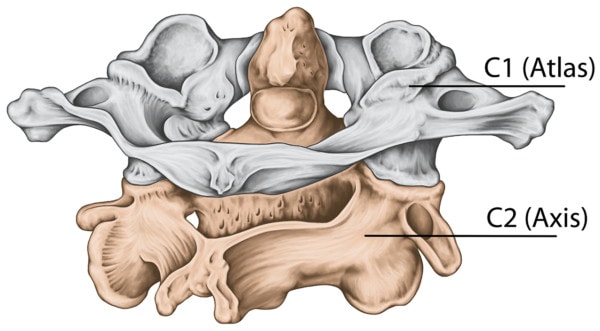
Stihii/Shutterstock
Your neck has joints about the size of your finger joints that help to control motion. One of them is pretty unique and is responsible for most of your head rotation. It’s also designed in a unique way that makes it inherently unstable and can cause vicious headaches if injured. Let’s explore the C1-C2 facet joint.
Neck Facet Joints
Most people have no idea that their neck has 14 joints that allow it to move in certain ways. These are numbered by their vertebrae (neck bones) from C0 to T1. So for example, the joint between the C5 and C6 bones is called the C5-C6 facet.
There are 7 of these on each side and two at each level. Five of those are pretty similar. However, the top two are very different. These are C0-C1 and C1-C2. Today we’re focused on the C1-C2 joint.
How the Upper Neck Bones Define What C1-C2 Can Do
How the C1 (atlas) and C2 (axis) bone fit together makes it easy to see what the joint is supposed to do:
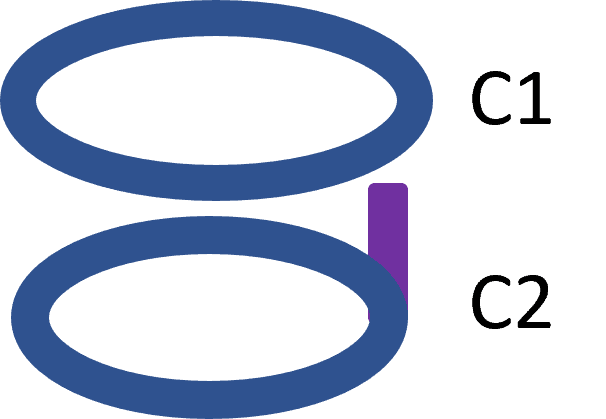
That peg on the C2 bone is called the dens (tooth in Latin) and fits into the atlas above and this is how they move:
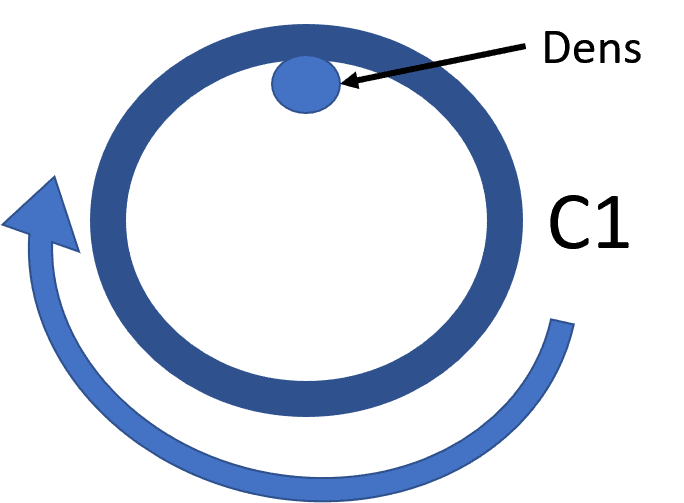
There’s a transverse ligament that holds the dens in place against the atlas:
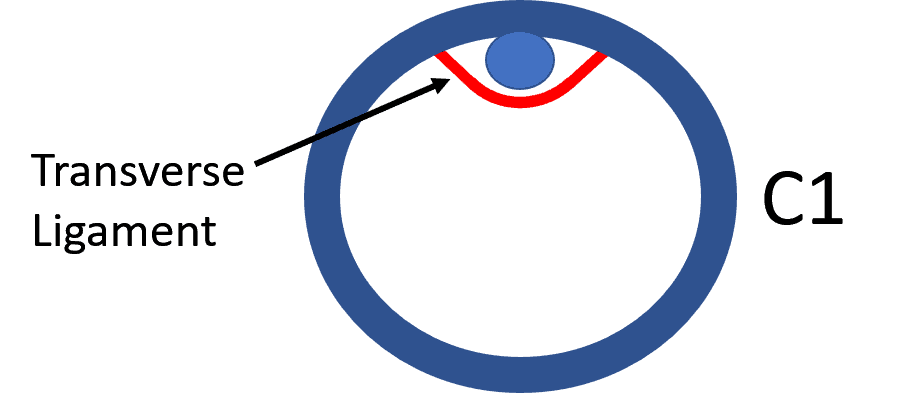
There are other ligaments that hold these two bones together (the alar and accessory ligaments):
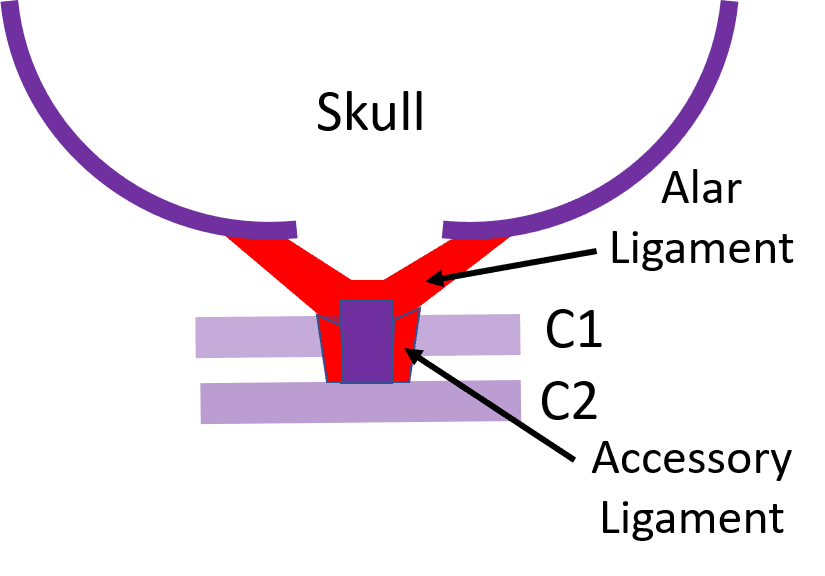
The C1-C2 Facet Joint
The upper neck facet joints live between all of the upper neck vertebrae:
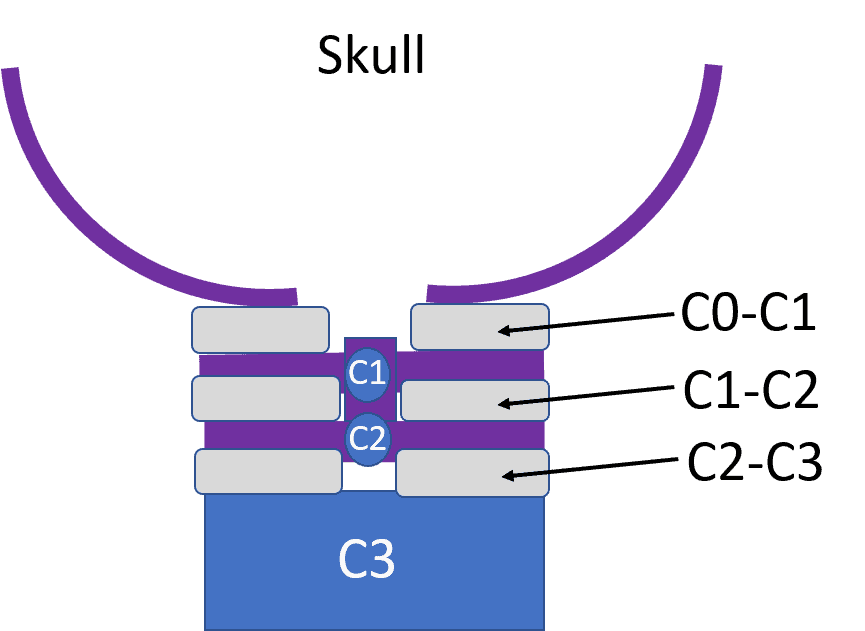
The C1-C2 facet joint is responsible for 50% of the total neck rotation. Like all facet joints, it has cartilage and a joint capsule. What makes this joint very unique is the shape of its internal joint surfaces:
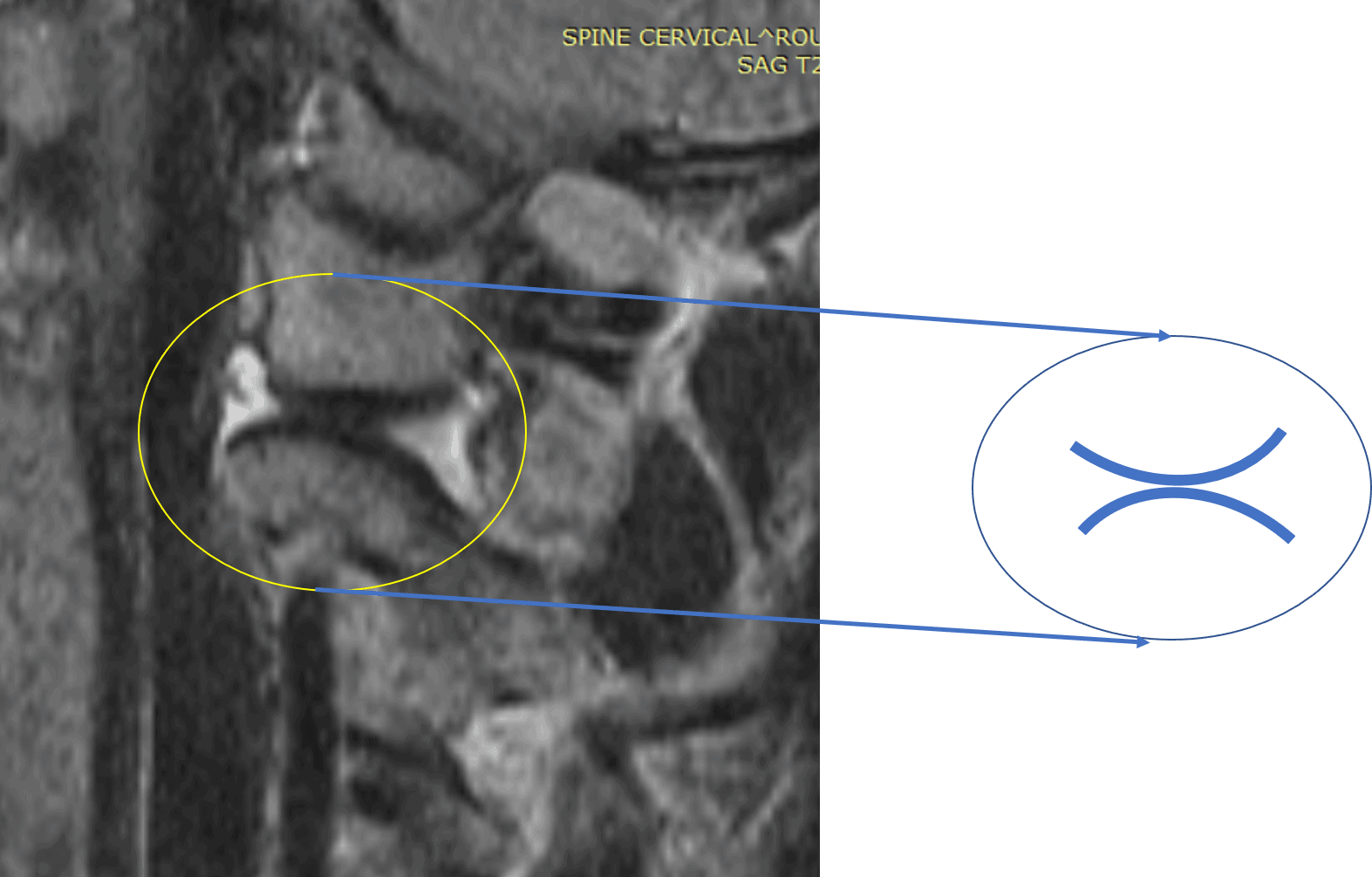
Above is an MRI side view of the C1-C2 facet joint. Its surfaces are shown to the right. Note that they are both convex, which is unusual in the body. Why? Usually, the joint surfaces fit together like a puzzle piece with one surface being convex and the other being concave. That makes them inherently stable. However, the C1-C2 joint is inherently unstable.
What does that mean? If we have a convex/concave joint like the one below and there are no muscles or ligaments acting on it, it’s not going anywhere. Meaning the joint surfaces stay together. The opposite is true if the joint surfaces are convex sitting ontop of convex:
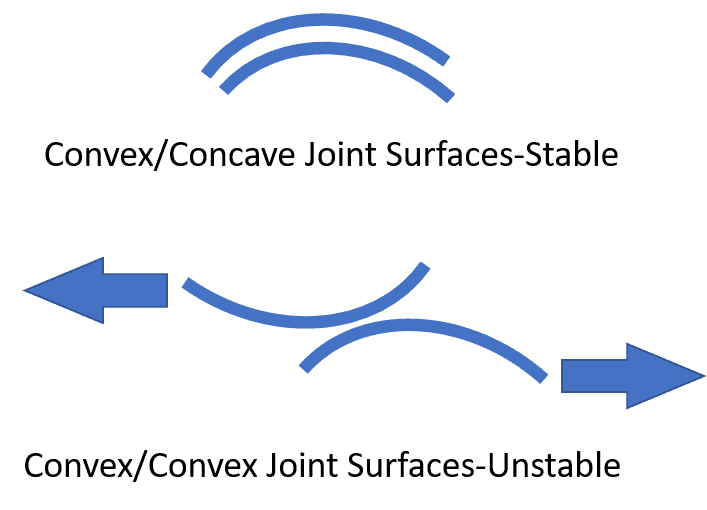
So the C1-C2 joint is inherently unstable. This explains why we have an entire field of chiropractic care devoted to this part of the neck.
Why Inherent C1-C2 Instability Can Wreck Havoc with Patients
Given that the C1-C2 joint is inherently unstable, if it doesn’t have ligaments to muscles to hold in in place, it tends to move out of place. This results in the C1 bone rotating on the C2. In fact, this is why an entire type of chiropractic (NUCCA) is devoted to trying to get C1-C2 back in place. So if you have C1-C2 instability due to damaged ligaments (Craniocervical Instability or CCI) it’s easy to see why this joint would not be “in place”.
What happens when this joint gets out of whack? The capsule is rich in position sensors that help maintain the position of the body relative to the neck, so your body will feel out of whack as well. In addition, the joint, when painful, refers its pain to the head. So you can also have headaches and other symptoms (see below).
In addition, it’s possible for this joint to be out of whack without having damaged ligaments. This is where a NUCCA chiropractor or an experienced manual physical therapist can make a big difference. Symptoms here include headaches, dizziness/imbalance, visual disturbances, brain fog, or spasm, or pain at the back of the head.
The upshot? The C1-C2 joint is unique. It allows for a big amount of rotation and has strong ligaments to support it. However, the way the joint surfaces come together makes it inherently unstable. Because of that, it’s easy for this joint to be out of place. In fact, there’s an entire portion of the chiropractic community devoted to getting the C1-C2 joint back in place!

If you have questions or comments about this blog post, please email us at [email protected]
NOTE: This blog post provides general information to help the reader better understand regenerative medicine, musculoskeletal health, and related subjects. All content provided in this blog, website, or any linked materials, including text, graphics, images, patient profiles, outcomes, and information, are not intended and should not be considered or used as a substitute for medical advice, diagnosis, or treatment. Please always consult with a professional and certified healthcare provider to discuss if a treatment is right for you.
